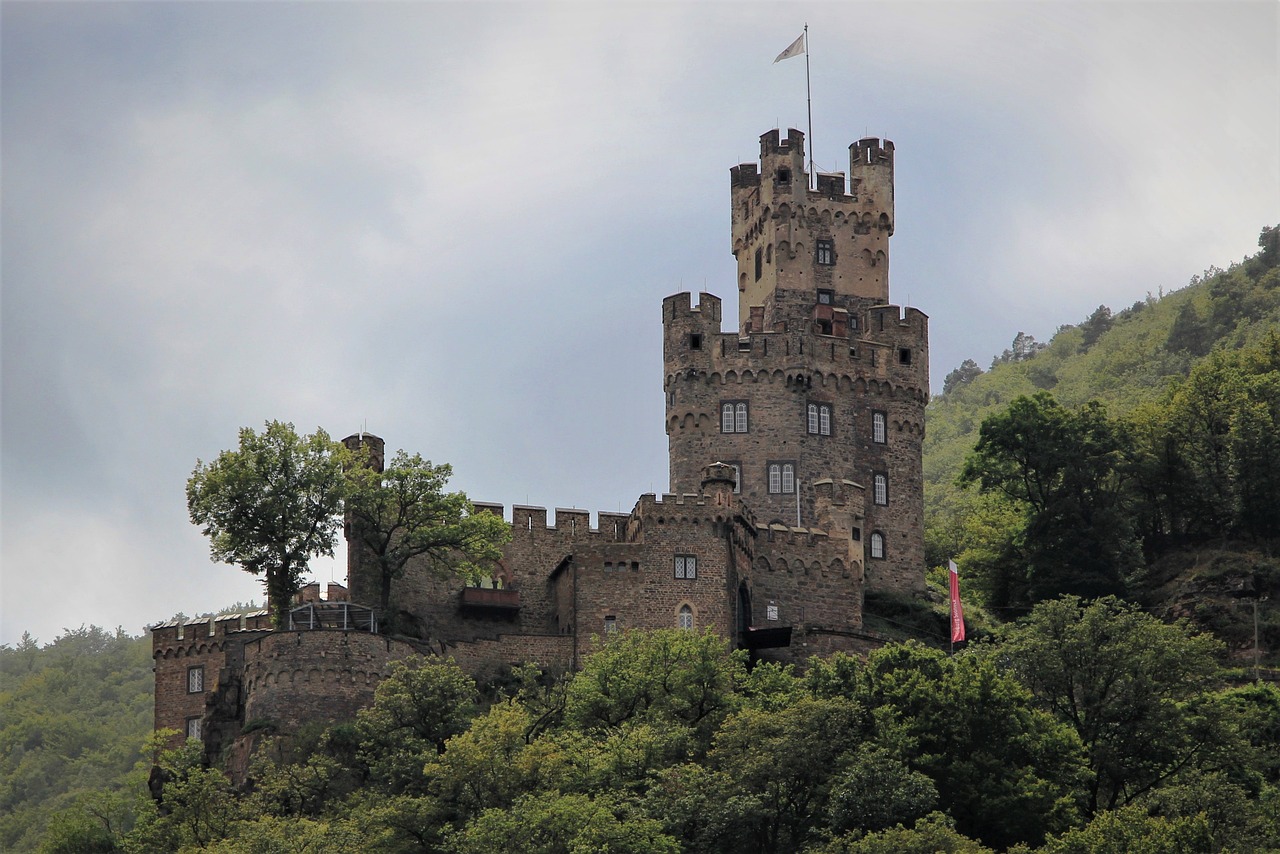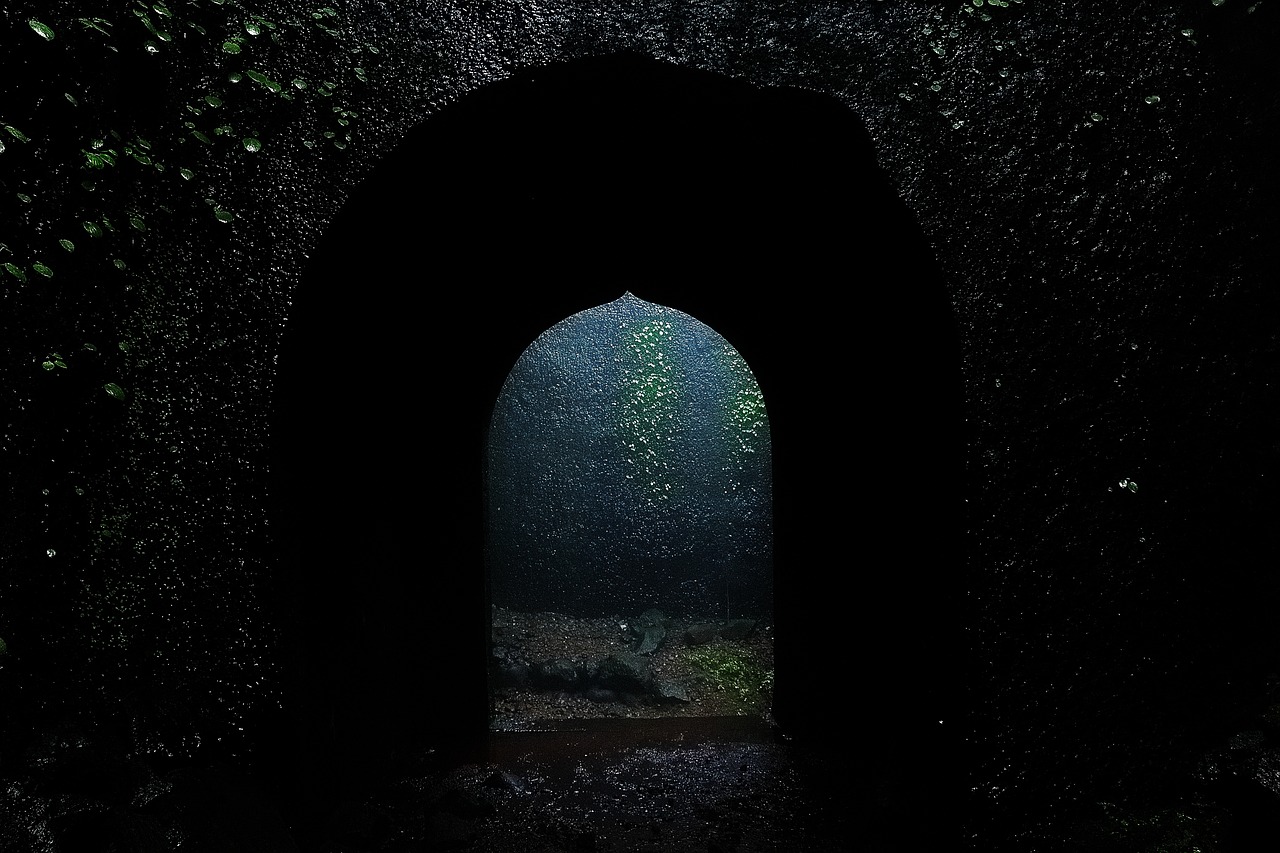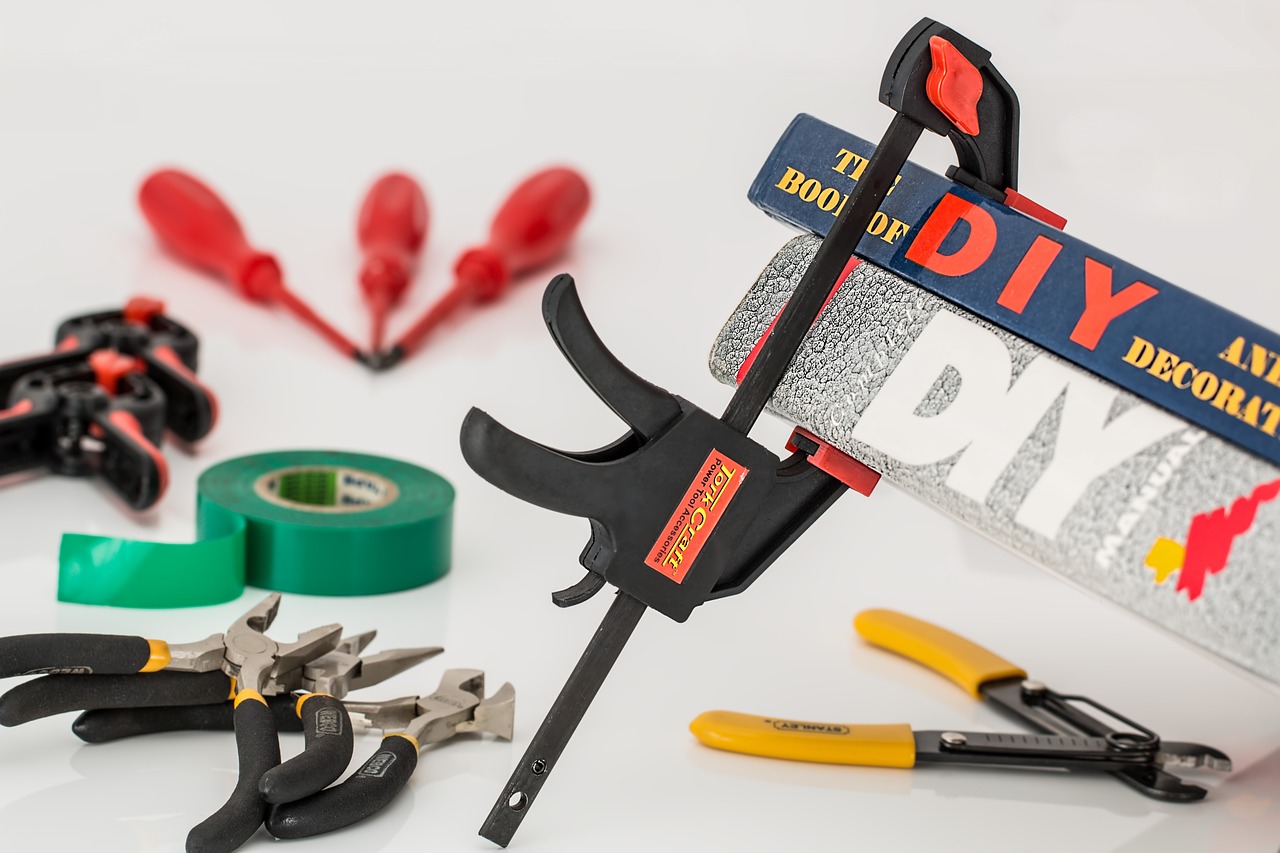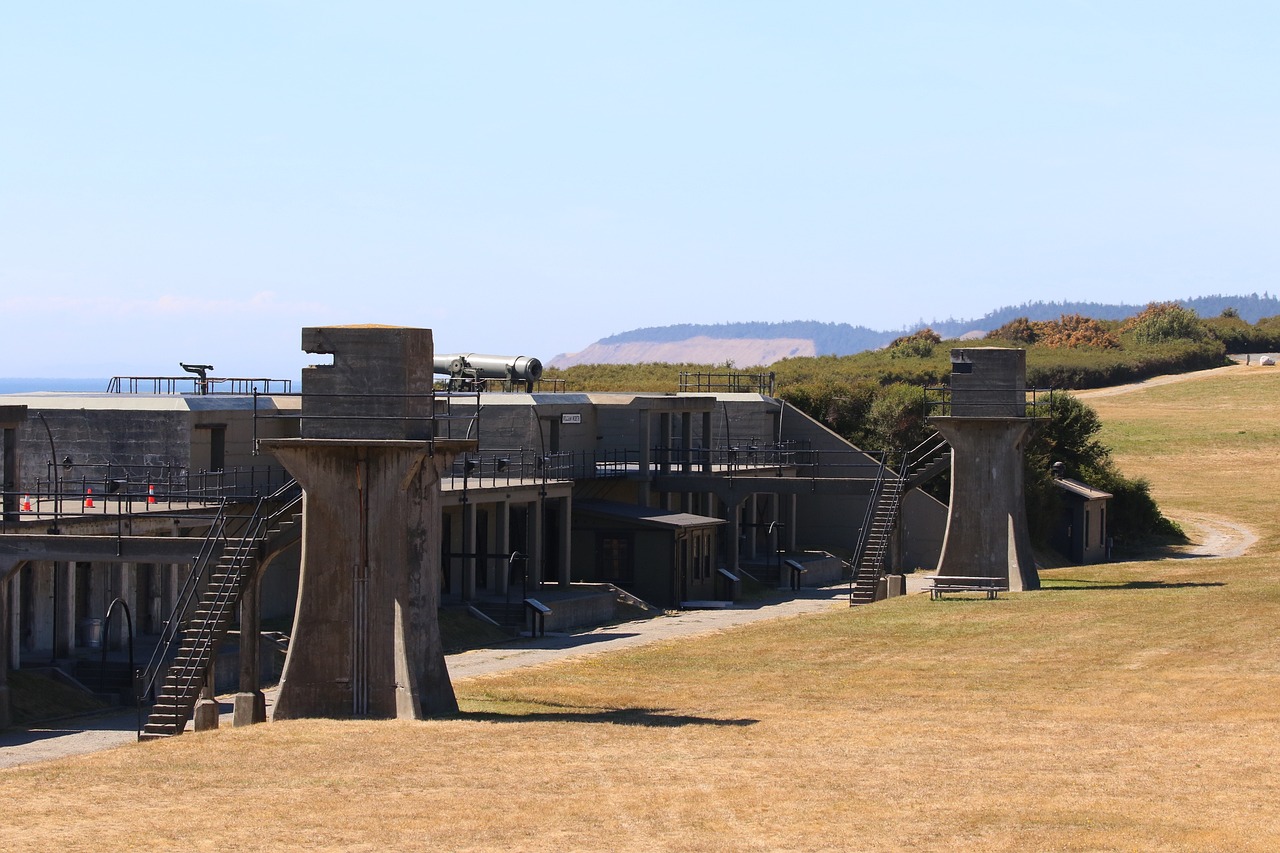Building DIY Forts: Creative Crafts for Kids
Building DIY forts is not just a fun activity; it’s a gateway to a world brimming with imagination and creativity. Have you ever watched your child’s eyes light up as they construct a cozy hideaway from everyday items? There’s something magical about transforming the mundane into the extraordinary. Whether it’s a rainy day or a sunny afternoon, fort building offers endless opportunities for kids to engage in imaginative play, develop crafting skills, and create lasting memories. So, gather your supplies, roll up your sleeves, and let’s dive into the exciting world of DIY forts!
Selecting the perfect spot for a fort can significantly enhance the overall experience. Think about it: a fort in a cramped corner might feel more like a cage than a castle! Instead, look for a space that is spacious, safe, and accessible. Consider the following factors:
- Space: Ensure there’s enough room for kids to move around comfortably.
- Safety: Avoid areas with sharp objects or hazards. Soft carpets or grassy areas are ideal.
- Accessibility: Choose a location that’s easy for kids to reach and build upon.
By choosing the right location, you set the stage for an unforgettable fort-building adventure!
Gathering the right materials is crucial for a successful fort. You don’t need to run out and buy expensive supplies; in fact, many common household items can be transformed into the foundation of your child’s dream fort. Here’s a list of materials you might want to consider:
- Blankets
- Sheets
- Pillows
- Chairs
- Tables
- Cushions
- Clothes pegs or clips
With these items at hand, your little ones can build sturdy and imaginative structures that spark their creativity!
Blankets and sheets are the unsung heroes of fort building. They are versatile materials that can be draped, secured, and arranged in countless ways to create a cozy hideaway. Imagine a sprawling kingdom made of colorful sheets or a secret cave formed from fluffy blankets! To maximize their potential, consider these tips:
- Layering: Use multiple blankets for added warmth and a more dynamic look.
- Draping: Experiment with different draping techniques to create interesting shapes.
- Securing: Use furniture to anchor your blankets, ensuring they stay in place.
Different types of blankets can serve various purposes in fort construction. Here’s a quick guide to help you choose the best materials:
| Type of Blanket | Purpose | Best For |
|---|---|---|
| Fleece Blankets | Warmth and Comfort | Cozy hideaways |
| Lightweight Sheets | Versatility | Easy draping |
| Weighted Blankets | Stability | Ground support |
By choosing the right type of blanket, you can enhance both the aesthetics and functionality of your fort!
Safety is key when building a fort. You wouldn’t want a castle to collapse in the middle of a royal meeting, right? To prevent collapses, discover effective methods for securing blankets and sheets:
- Use heavy furniture to anchor the corners of your fort.
- Clip blankets together with clothes pegs for extra stability.
- Involve kids in the process of checking if everything is secure before they dive in!
Furniture can provide a solid foundation for your fort. Think of chairs as the mighty walls of a fortress or tables as the roofs of a grand palace! Here’s how to creatively use furniture:
- Arrange chairs in a circle for a cozy gathering place.
- Use a table as a base and drape blankets over it to create a cave-like structure.
- Stack cushions for added height and comfort.
With furniture, the possibilities are endless, and the adventure is just beginning!
Adding a theme can make fort building even more fun. It’s like putting on a costume for your imagination! We’ll explore different themes that can inspire imaginative play and enhance the overall experience.
Adventure-themed forts can transport kids to different worlds. Imagine sailing the high seas on a pirate ship or defending a castle from dragons! Here are some ideas:
- Pirate Ships: Use dark blankets and cardboard cutouts to create a ship’s deck.
- Castles: Build towering walls with pillows and blankets for a royal touch.
- Jungle Hideouts: Incorporate green blankets and stuffed animals for a wild experience!
Transforming a fort into a cozy reading nook can foster a love for books. Picture this: a soft, inviting space filled with cushions, blankets, and a pile of books waiting to be explored. To create an inviting space:
- Arrange cushions for comfortable seating.
- Include a small lamp or flashlight for reading.
- Decorate the fort with fairy lights for a magical atmosphere.
Q: What materials can I use to build a fort?
A: Common materials include blankets, sheets, pillows, chairs, and tables. Get creative with whatever you have at home!
Q: How can I ensure my fort is safe?
A: Make sure to secure all materials properly and avoid using items that could fall or collapse. Involve your kids in checking the stability of the structure.
Q: Can fort building be educational?
A: Absolutely! It encourages creativity, problem-solving, and teamwork. Plus, you can incorporate learning themes, like reading or storytelling, into the fort experience!

Choosing the Right Location
When it comes to building the ultimate DIY fort, the location you choose can make all the difference. Imagine setting up your cozy hideaway in a space that not only feels safe but also sparks creativity! Think of it as choosing the perfect canvas for your masterpiece. So, where should you start? Here are some key factors to consider when selecting the ideal spot for your fort:
- Space: You want to find a location that offers enough room for your fort to grow. Whether it's a corner of the living room or a spot in the backyard, make sure there’s ample space for the kids to move around and play without feeling cramped.
- Safety: Safety should always be a top priority. Look for areas that are free from hazards like sharp edges, heavy furniture, or anything that could cause accidents. A soft carpet or grass can provide a comfy landing if things get a little wild!
- Accessibility: Choose a spot that’s easy to access. If the fort is in a hard-to-reach location, kids might lose interest quickly. A location near their favorite toys or books can encourage them to dive into imaginative play.
Another fun aspect to consider is the environment. If you can, try to pick a spot that has natural light streaming in. Sunlight can make the fort feel warm and inviting, almost like a magical hideaway! Plus, if you’re outdoors, the sounds of nature can enhance the adventure. Just picture the rustling leaves or the chirping birds as the backdrop to your pirate ship or castle!
Lastly, don’t forget about privacy. Kids love the idea of having their own secret space. A fort tucked away in a quiet corner or behind a set of curtains can feel like a hidden treasure. It’s all about creating a space where their imagination can run wild without distractions from the outside world.
In summary, the right location for a DIY fort can elevate the entire experience. By considering aspects like space, safety, accessibility, environment, and privacy, you can help create a magical space where kids can explore their creativity and engage in imaginative play. So, grab those blankets and cushions, and let’s get building!
Q1: What is the best place to build a fort indoors?
A1: Look for a spacious area like the living room or a bedroom where you can easily access blankets and furniture. Make sure it’s free from hazards!
Q2: Can we build a fort outside?
A2: Absolutely! Just be sure to choose a flat, safe area away from any sharp objects or hazards. A backyard or a park can provide a fantastic backdrop for outdoor adventures!
Q3: How can we make the fort more fun?
A3: Incorporate themes, add fairy lights, or include favorite toys and books to create a unique environment that enhances imaginative play.

Essential Materials for Fort Building
When it comes to building the ultimate DIY fort, having the right materials is like having the secret sauce to a delicious recipe. You want to ensure that your fort is not only fun but also sturdy enough to withstand the wild adventures that await inside. So, let’s dive into the essential materials that will turn your living room into a magical fortress!
First off, you can’t go wrong with blankets and sheets. These are the backbone of any fort. They can be draped over furniture, hung from hooks, or even pinned to the wall to create a cozy atmosphere. But not all blankets are created equal! Some are heavy and thick, providing excellent insulation, while others are light and airy, perfect for a breezy hideaway. Consider using a mix of both to add texture and variety to your fort. Here’s a quick breakdown:
| Type of Blanket | Best Use |
|---|---|
| Fleece Blankets | Warmth and coziness |
| Lightweight Sheets | Creating airy walls |
| Quilts | Adding a decorative touch |
Next up, furniture plays a crucial role in fort building. Think about using chairs, tables, and even couches as the framework for your structure. A couple of chairs can serve as the entrance to your fort, while a table can create a solid roof. When using furniture, make sure to consider the height and stability of the pieces you choose. After all, you want your fort to be a safe haven, not a precarious pile of furniture!
Don’t forget about clips and clothespins! These handy little tools can be lifesavers when it comes to securing your fort’s walls. They can hold blankets in place, making sure everything stays put even when the kids are bouncing around inside. Additionally, using string lights or flashlights can add a magical ambiance to your fort, transforming it into a whimsical hideaway that glows with adventure.
Lastly, let’s talk about decorative items. Once your fort is built, it’s time to make it feel like home. Think about adding cushions, stuffed animals, and even fairy lights to create a welcoming environment. Not only do these items add comfort, but they also encourage imaginative play. Kids can transform their fort into a pirate ship, a cozy reading nook, or even a secret lair with just a few well-placed decorations!
In summary, the essential materials for building a fort include:
- Blankets and sheets
- Furniture for structure
- Clips and clothespins for securing
- String lights for ambiance
- Decorative items for personalization
With these materials in hand, you’re ready to embark on a fort-building adventure that will ignite creativity and provide hours of entertainment. So gather your supplies, rally the troops, and let the fort-building begin!
Q: What is the best location for building a fort?
A: Look for a spacious area with minimal obstacles. Living rooms, basements, or even backyards can work great. Just make sure it’s safe!
Q: How can I make my fort more stable?
A: Use heavier blankets for the roof and secure them with clips. Also, make sure the furniture you use is sturdy and well-placed.
Q: What themes can I use for my fort?
A: The possibilities are endless! You can create a pirate ship, a castle, or even a cozy reading nook. Let your imagination run wild!

Using Blankets and Sheets
When it comes to building the ultimate DIY fort, blankets and sheets are your best friends. These everyday items are not just for keeping warm during chilly nights; they can transform any room into a magical hideaway. Imagine the thrill of stepping into a fort that feels like a castle or a pirate ship! The secret lies in how you drape, secure, and arrange these materials. With a little creativity and some basic techniques, you can create a cozy sanctuary that sparks your child's imagination.
The beauty of using blankets and sheets is their versatility. You can easily manipulate their shapes and sizes to suit your fort's design. For instance, a large bed sheet can serve as a roof, while smaller blankets can create walls or even a comfy floor. Have you ever thought about how a simple sheet can become a majestic canopy? By hanging it from the ceiling or draping it over furniture, you can create an inviting space that feels both safe and adventurous.
To get started, gather a variety of blankets and sheets. Different textures and colors can add a fun visual element to your fort. Consider using:
- Fleece blankets: Soft and warm, perfect for creating a cozy ambiance.
- Lightweight sheets: Ideal for draping and allowing light to filter through.
- Quilts: These can add a touch of charm and warmth, making the fort extra inviting.
Once you've gathered your materials, think about the layout. A good starting point is to use furniture as the framework. Chairs can act as sturdy supports for your blanket roof, while tables can create a solid base. Make sure the blankets are draped securely over the furniture to prevent any unexpected collapses. You can use clothespins, clips, or even heavy books to hold the blankets in place. Just like a builder uses tools, you’ll want to ensure your fort is stable and safe for play.
As you build, encourage your kids to get involved in the process. Ask them where they think the entrance should be or whether they prefer a tunnel or an open space. This not only makes the fort-building experience more interactive but also allows them to express their creativity. After all, a fort isn’t just a structure; it’s a canvas for their imagination!
Finally, don’t forget to add personal touches to the fort. Throw in some pillows for comfort, hang fairy lights for a magical glow, or even place their favorite stuffed animals inside. These little details can transform a simple blanket fort into a cherished hideaway where countless adventures await.

Types of Blankets
When it comes to building the ultimate DIY fort, the type of blanket you choose can make all the difference. Just like a chef selects the finest ingredients for a dish, selecting the right blankets can elevate your fort from a simple hideaway to a magical sanctuary. Here are some popular types of blankets and their unique benefits:
- Fleece Blankets: These are soft, warm, and lightweight, making them perfect for draping over furniture. Their flexibility allows for easy manipulation, creating cozy corners in your fort.
- Quilts: Not only do they add a touch of color, but quilts also provide a bit of structure due to their weight. They can help keep your fort stable while offering a comforting aesthetic.
- Bed Sheets: Thin and easy to maneuver, bed sheets are fantastic for creating walls and ceilings. They can be easily tucked and secured, allowing for a more open and airy feel within your fort.
- Weighted Blankets: If you’re looking for a snug, secure feeling, weighted blankets can offer that extra layer of comfort. They can also help keep your fort grounded, preventing it from blowing away during those dramatic pirate adventures!
Each blanket serves a unique purpose, and combining different types can lead to a more dynamic and exciting fort. For instance, using a fleece blanket for the roof can keep things cozy, while a couple of colorful quilts can brighten the interior. Remember, the goal is to create a space that feels inviting and encourages imaginative play.
Additionally, consider the size and color of the blankets. Larger blankets can cover more area, making it easier to create a spacious fort, while bright colors can stimulate creativity and make the fort feel more vibrant. Also, think about how these blankets can be layered to provide different textures and experiences. Just like a painter blends colors on a canvas, you can blend different fabrics to create a unique fort atmosphere!
As you gather your materials, don't forget about the importance of safety. Ensure that the blankets are securely fastened and that your fort is stable enough for play. A well-constructed fort not only enhances the fun but also gives parents peace of mind. After all, nothing ruins an adventure faster than a collapsing fort!
Q: What types of blankets are best for fort building?
A: The best blankets for fort building include fleece for warmth, quilts for structure, bed sheets for flexibility, and weighted blankets for a snug feeling. Mixing different types can enhance the fort experience!
Q: How can I secure my fort to prevent it from collapsing?
A: You can secure your fort by using heavy furniture as anchors, tucking blankets under cushions, or using clips to hold blankets in place. Always ensure that the structure is stable before playtime.
Q: Can I use other materials besides blankets?
A: Absolutely! You can use pillows, cushions, and even cardboard boxes to enhance your fort. Be creative and use what you have around the house to make your fort unique!

Securing Your Structure
When it comes to building a fort, securing your structure is absolutely essential. Imagine spending all that time crafting the perfect hideaway only to have it collapse at the first sign of movement! To avoid such a disaster, you want to ensure your fort is stable enough to withstand the enthusiastic play of your little ones. Start by assessing the materials you have on hand. For instance, using heavy blankets can provide a solid foundation, but you need to anchor them properly. Here are some effective methods to secure your fort:
- Use Furniture Wisely: Leverage the weight of chairs and tables to support your fort. Position them strategically to create walls and roofs that won’t easily budge.
- Clips and Clothespins: These handy tools can be your best friends. Use them to clip blankets to furniture or even to each other, ensuring they stay in place.
- Weighted Objects: Place books or small bags of rice at the edges of your blankets to hold them down. This adds extra stability, especially if kids are crawling in and out.
Another important aspect of securing your fort is to create a clear entry and exit point. This not only makes it easier for kids to move in and out but also helps to maintain the integrity of the structure. If they have to squeeze through a tiny opening, it could lead to accidental dislodging of the blankets or sheets. Consider using a designated chair or a small opening made from a blanket flap for this purpose.
Furthermore, regularly check your fort during playtime. Kids can get a little wild, and it’s not uncommon for a blanket to shift or a chair to slide. By keeping an eye on the structure, you can quickly make adjustments to maintain safety and stability. Remember, the goal is to create a fun and safe environment where kids can let their imaginations run wild without the worry of their fort collapsing around them.
In conclusion, securing your fort structure is a blend of creativity and practicality. By using furniture effectively, employing clips and weights, and maintaining a watchful eye, you can ensure that your DIY fort remains a safe haven for play. So gather those blankets, rally the kids, and let the fort-building adventures begin!
Here are some common questions about fort building that might help guide your creative process:
- What materials are best for fort building? Look for sturdy blankets, sheets, and furniture. The heavier the material, the more stable your fort will be.
- How can I make my fort more fun? Add fairy lights, pillows, and themed decorations to enhance the atmosphere!
- Is it safe for kids to play in forts? Yes, as long as you secure the structure properly and supervise playtime.

Incorporating Furniture
When it comes to building the ultimate DIY fort, incorporating furniture can elevate your creation from a simple blanket structure to a magnificent fortress that sparks the imagination. Think of furniture as the backbone of your fort—providing support, stability, and even a bit of flair. The good news is that you don’t need fancy materials; your living room or playroom is likely filled with items that can help you create a cozy hideout.
Start by looking around your home. Chairs, tables, and cushions can all play a vital role in fort construction. For instance, a few chairs can create the walls of your fort, while a table can serve as the ceiling, creating a cave-like atmosphere. Just imagine transforming your dining chairs into the sturdy walls of a castle, or your couch into a pirate ship sailing the high seas! The possibilities are endless, and the best part is that you can involve your kids in the process, making it a fun family activity.
When incorporating furniture, consider the following tips:
- Choose the Right Size: Make sure the furniture you use is appropriate for the size of the fort you want to build. A large table can create an expansive space, while smaller chairs can be perfect for a snug hideaway.
- Stability is Key: Ensure that the furniture is stable and won’t tip over easily. You want your fort to be a safe place for your kids to play, not a potential hazard.
- Use Cushions for Comfort: Adding cushions not only makes the fort more comfortable but also adds an element of fun. Kids can throw cushions around to create seating areas or soft landing spots inside the fort.
To really take your fort to the next level, think about how you can arrange the furniture creatively. For example, you could stack cushions to create a lookout tower or use a blanket draped over a table to create a secret entrance. The more imaginative the setup, the more your kids will enjoy playing in their new space. You can even incorporate fairy lights or flashlights to create a magical ambiance inside the fort, making it feel like a hidden world waiting to be explored.
Incorporating furniture into your DIY fort not only enhances the overall structure but also encourages your children to think creatively. They can role-play different scenarios, whether they’re embarking on a grand adventure, hosting a tea party, or simply enjoying some quiet time with a book. So, gather those cushions, chairs, and tables, and watch as your living room transforms into a world of imagination and fun!
Q: What types of furniture are best for fort building?
A: Chairs, tables, and cushions are excellent choices. Just make sure they are stable and safe for play.
Q: How can I ensure my fort is safe for my kids?
A: Always check that the furniture is stable and secure. Avoid using items that could easily tip over or collapse.
Q: Can I use outdoor furniture for building a fort?
A: Absolutely! Just make sure it’s safe and appropriate for indoor play if you bring it inside.
Q: How can I make my fort more exciting?
A: Incorporate lights, pillows, and themed decorations to create an inviting and imaginative atmosphere.

Creative Themes for Forts
Building a fort is not just about stacking pillows and draping blankets; it’s an opportunity for kids to unleash their creativity and dive into imaginative worlds. By adding a theme to their fort, children can transform a simple structure into a magical realm. Imagine the excitement of creating a pirate ship sailing the high seas or a cozy reading nook nestled in a mystical forest! Themes can enhance the play experience, making it more engaging and memorable. Here are some fantastic ideas to inspire your little builders:
Adventure-themed forts can transport kids to different worlds, igniting their imagination like nothing else. Picture this: a fort designed as a pirate ship, complete with a treasure chest and a makeshift sail! Kids can don their pirate hats and embark on a quest to find hidden treasure in the living room. Alternatively, they might choose to build a castle, where they can be kings and queens ruling over their kingdom. Jungle hideouts are another thrilling option, where kids can pretend to be explorers navigating through the dense foliage of their living room jungle. Here are some adventure themes to consider:
- Pirate Ship: Use blankets as sails and cushions as cannons.
- Castle: Create towers using chairs and drape sheets for walls.
- Jungle Hideout: Incorporate plants and stuffed animals to create a wild atmosphere.
Transforming a fort into a cozy reading nook can foster a love for books and create a peaceful space for quiet time. Imagine a fort where the walls are lined with pillows, and soft lighting creates a warm ambiance. Kids can snuggle up with their favorite books, surrounded by the comforting embrace of their fort. To enhance this experience, consider adding fairy lights or a small lamp for a magical touch. A reading nook fort not only encourages literacy but also provides a safe haven for kids to explore new worlds through literature.
By incorporating themes into fort building, children can develop storytelling skills and engage in role play, making their playtime both educational and fun. As parents, you can encourage this creativity by providing various materials and ideas, allowing their imaginations to run wild. After all, the best forts are those that come from the heart and reflect the unique interests of your children.
Q: What materials do I need to build a fort?
A: You can use blankets, sheets, pillows, chairs, and even furniture to create a sturdy and imaginative fort. The more versatile the materials, the better!
Q: How can I ensure the fort is safe for my kids?
A: Make sure to secure the blankets and sheets properly, and avoid stacking furniture too high. Always supervise younger children during playtime to prevent accidents.
Q: What themes can I use for fort building?
A: Some popular themes include pirate ships, castles, jungle hideouts, and cozy reading nooks. Encourage your kids to come up with their own themes as well!
Q: How can I make the fort more comfortable?
A: Add cushions, blankets, and even soft lighting to create a cozy atmosphere. A few snacks and drinks can also enhance the experience!

Adventure Themes
Adventure-themed forts can truly transport kids to different worlds, igniting their imaginations and sparking creativity. Picture this: a simple blanket fort suddenly transforms into a majestic castle where knights battle dragons, or a cozy hideout in the jungle where explorers search for hidden treasures. The possibilities are endless, and the excitement is palpable! To kickstart this imaginative journey, you can incorporate various themes that resonate with your child's interests. Here are a few ideas:
- Pirate Ship: Use sheets to create sails and cardboard boxes for the hull. Kids can dress up as pirates and embark on a treasure hunt in the living room.
- Space Station: Drape dark blankets to mimic the night sky, and add glow-in-the-dark stars. Kids can become astronauts exploring distant planets.
- Jungle Hideout: Use green blankets and cushions to create a lush environment. Add stuffed animals to represent exotic wildlife.
Each of these themes not only makes fort-building more engaging but also encourages storytelling and role play. Kids can take on different characters, creating narratives that unfold as they play. For instance, in a pirate ship fort, they might decide to search for buried treasure, using a map they crafted themselves. This kind of imaginative play is essential for cognitive development, as it allows children to explore problem-solving and critical thinking in a fun and interactive way.
Additionally, consider incorporating props that align with the chosen theme. For a castle, you might use cardboard shields and swords, while for a space station, some homemade control panels made from old electronics could add to the atmosphere. These little details can make the fort feel more authentic and enhance the overall experience. Remember, the goal is to create a space that feels magical and encourages kids to dive deep into their imaginative worlds.
As you embark on this adventure of fort building, don't forget to encourage your children to express their ideas and contribute to the design. Ask them questions like, "What should our pirate ship look like?" or "What treasures do we want to find?" This not only fosters creativity but also strengthens their decision-making skills. Together, you can build a world where every day is a new adventure, filled with stories waiting to be told!
Q: How can I make the fort more stable?
A: To enhance stability, ensure that you use heavier blankets for the base and secure them with furniture. You can also use clips or clothespins to hold sheets in place.
Q: What can I do if I don't have enough space for a big fort?
A: Even small spaces can be transformed into cozy forts! Use corners of rooms or under tables to create intimate hideaways that feel just as adventurous.
Q: How do I encourage my child to clean up after fort building?
A: Turn cleanup into a game! Set a timer and challenge your child to see how quickly they can dismantle the fort. You can even reward them with a fun activity afterward.

Cozy Reading Nooks
Transforming a fort into a cozy reading nook is not just about creating a physical space; it’s about crafting an atmosphere that invites imagination and exploration. Just picture it: a snug little haven where your child can escape into the pages of their favorite stories, surrounded by soft blankets and the gentle glow of fairy lights. Sounds dreamy, right? To create this magical reading nook, you’ll want to start by selecting the perfect location within your fort. Look for a spot that feels safe and secluded, yet comfortable enough to settle in with a good book.
Next, let’s talk about materials. You’ll want to gather some essentials that will make your reading nook both inviting and functional. Think about incorporating:
- Soft cushions for seating: These can be thrown pillows or even bean bags that provide comfort during those long reading sessions.
- Blankets for warmth: A few soft throws can turn a chilly afternoon into a cozy retreat.
- Good lighting: Whether it’s fairy lights strung around the fort or a small lamp, proper lighting is crucial for reading.
Now, once you have your materials, it’s time to get creative! Drape blankets across the fort to create a ceiling that feels like a cozy cave. You can even hang fairy lights or a string of colorful lanterns to add a whimsical touch. This simple addition can transform your fort into a magical hideaway that beckons your child to dive into their favorite stories.
Don’t forget to personalize the space! Encourage your child to decorate their reading nook with their favorite books, stuffed animals, or even artwork they’ve created. This personal touch not only makes the nook feel special but also fosters a sense of ownership and pride in their reading space.
Lastly, consider the theme of the reading nook. You could choose a nature theme, where the fort is filled with plush leaves and stuffed animals, or maybe a space theme with stars and planets hanging overhead. The theme can enhance the reading experience, making it even more immersive. For example, if your child loves adventure stories, a jungle-themed nook could be filled with plush jungle animals and green decorations, transporting them to a world of exploration.
In conclusion, a cozy reading nook within a DIY fort can be a delightful escape for children, encouraging them to fall in love with reading while using their imagination. So, gather those blankets, cushions, and fairy lights, and start creating a magical space where stories come alive!
Q: How can I make my reading nook more inviting?
A: Adding personal touches like favorite books, plush toys, and decorative items can make the nook feel special. Soft lighting and comfortable seating are also key!
Q: What materials are best for building a fort?
A: Blankets, sheets, and cushions are excellent for fort building. You can also use furniture like chairs and tables to create a more stable structure.
Q: How can I encourage my child to read in their nook?
A: Create a routine where reading time is part of their day. Make the nook a special place where they can enjoy quiet time with a book.
Frequently Asked Questions
- What materials do I need to build a fort?
To build a fantastic fort, you can use everyday items like blankets, sheets, cushions, and furniture. Think about gathering chairs, tables, and pillow for added structure. The more creative you get with your materials, the more fun your fort will be!
- How can I ensure my fort is safe for kids?
Safety is super important when building a fort. Make sure to securely fasten blankets and sheets to prevent them from collapsing. Using sturdy furniture as a base can also help keep everything stable. Always check that the fort is free from sharp objects or hazards before letting the kids dive in!
- What are some fun themes for fort building?
Themed forts can take playtime to the next level! Consider creating an adventure theme like a pirate ship or jungle hideout. Alternatively, setting up a cozy reading nook can encourage quiet time with books. Let your imagination run wild and see where it takes you!
- Can I build a fort outside?
Absolutely! Outdoor forts can be a blast. Just make sure to choose a safe location, away from any hazards. You can use tarps, outdoor furniture, and even natural elements like trees for support. Just keep an eye on the weather so your fort doesn’t wash away!
- How do I make my fort more comfortable?
To make your fort cozy, add soft cushions, blankets, and even fairy lights for a magical touch. You can also include some of your child’s favorite toys or books inside. The goal is to create a space that feels inviting and snug!
- What age is appropriate for fort building?
Fort building is suitable for kids of all ages! Younger children may need some adult supervision for safety, while older kids can get creative and build more complex structures on their own. It's a great way for kids to use their imagination and develop crafting skills!



















